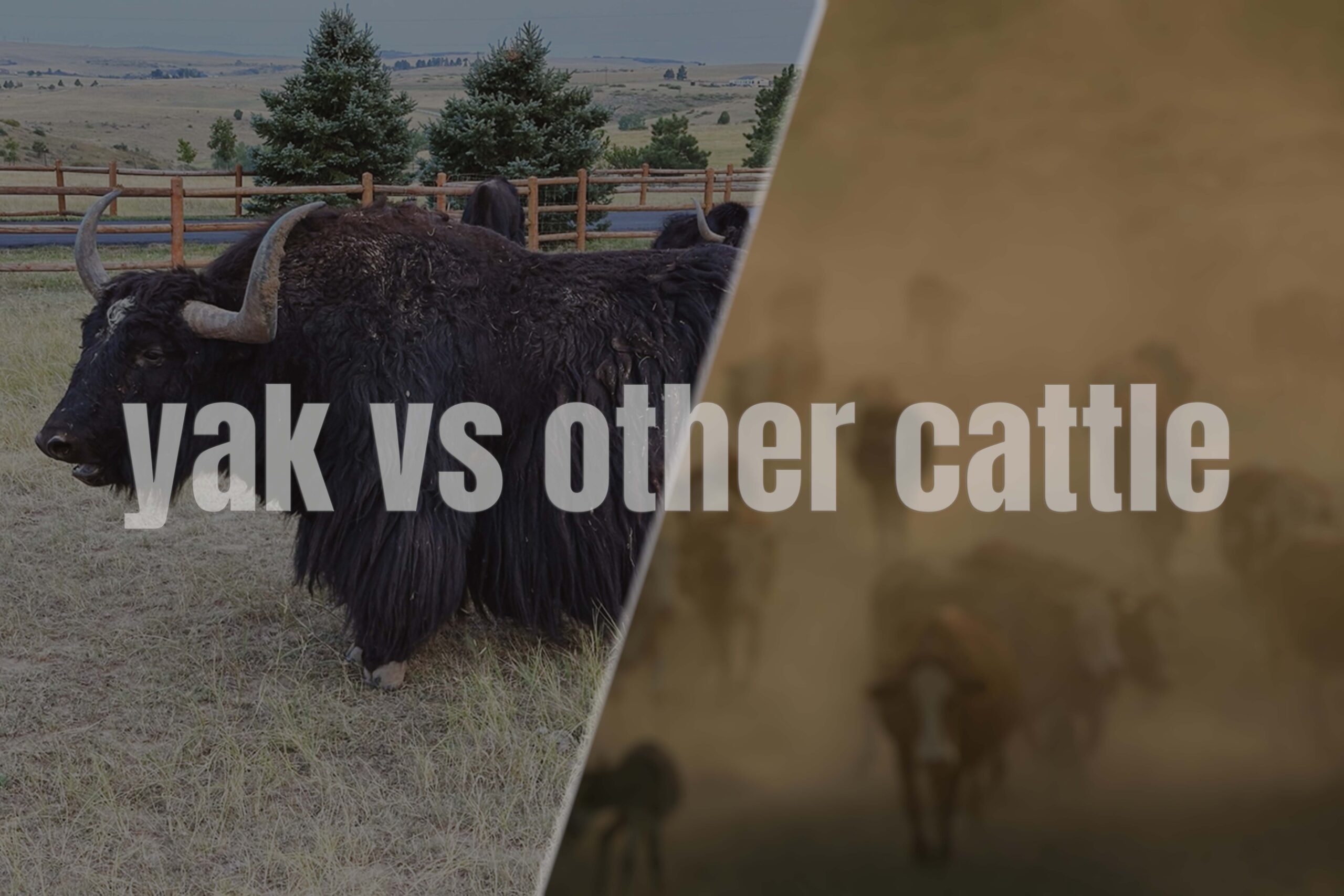Discover the story of our ranch
IT HAS CONTINUED UNINTERRUPTEDLY SINCE 2019

Our story
We started with three cows and one bull in 2019. Our herd is currently 20 animals. We started with goats and sheep for 4H but focus now exclusively on Yaks that are closely related to bison. They have a long thick fur and distinctive horns and ability to live up to 20,000 feet. Their lungs are unusually large with more ribs than cattle. Unlike all other mammals, they keep producing fetal hemoglobin after birth which has a greater oxygen carrying capacity. Humans switch after birth to adult hemoglobin. There are about 9,000 Yaks in America and of those at least 5,000 in Colorado. They thrive in temperatures as low as -40 deg F. Unlike most mammals they do not sweat and can overheat. They require high altitude (>6,000 ft, cool)) based on their adaptation in their native land in the Himalayas, Tibetan plateau where they are part of the culture providing milk, fur/hair, meat and as an animal of burden since they are sure footed in mountainous terrain. The Yak dung is vital for cooking and as heating fuel and even as insulation for homes in the past. Yaks have been used for thousands of years to carry loads (e.g. Himalayan pink salt) 220-330 pounds over rough terrain, more than is comfortable for a horse. Yak wool is softer and warmer than sheep wool and compared to cashmere. They can run fast for a short distance and very adept at climbing a rocky surface.



Yaks are more sustainable livestock than regular cattle due to their lower environmental impact. (much lower methane output). Their unique grazing pattern maintains plant biodiversity and prevents spread of invasive species in high-altitude ecosystems. Yaks are generally calm and have a docile temperament. As a herd animal they are very social but very protective of newborn calves. They recognize their caretakers and enjoy the company. Yak meat is leaner with a low cholesterol and saturated fat (1-2% vs 10-30% in corn-fed beef) content. and high omega-3 fatty acid. We feed them only pasture grass and no corn as is typical in the industry to gain weight rapidly and for marbling (intra-muscular fat). This grain-based diet contributes to health risks. We also avoid hormones and antibiotics. The meat is slightly sweeter, leaner and more tender than beef from cattle or bison. No gamey flavor because they eat only grass and hay. We welcome visitors to see them.


OUR YAKS ARE FED WELL WITH NUTRITIOUS GREEN GRASS AND GRAZES FREELY ON 50 ACRES

Our Mission & Values
Sustainable high-altitude ranching.
Zero synthetic hormones or antibiotics.
Regenerative grazing to rebuild soil.

Yak vs Traditional Livestock
Cold tolerance: thrives even at 14,000 ft elevation.
Fiber fineness: 15–19 micron down.
Methane output: 60 % lower than cattle.
Land impact: lighter hooves, no overgrazing.

Yak Meat is Better
Leaner: 70 % less fat than beef, lower cholesterol.
Nutrient-dense: higher iron, omega-3s, and CLA.
Cleaner taste: no gamey flavor, naturally sweet and tender.
Eco-friendly: 60 % lower methane, thrives on marginal land.